
Background information
"Mum, when are we going to sow the tomatoes?"
by Ann-Kathrin Schäfer

180 centimetres deep. 75 centimetres wide. 220 centimetres long. The dimensions of an average adult-sized grave.
Metal meets metal. Rock on wood. In the background, the constant whirring of an excavator. Every so often, you hear powerful spade thrusts loosening up the earth. This feels more like a construction site than a cemetery. All in a day's work for the grave makers at Hörnli cemetery. The largest resting place in Switzerland. It's in Riehen, close to the city of Basel. On this sunny winter's day, there is nothing sad about these 54 hectares. It's nothing like low-budget horror films, in which thick fog winds its way between the graves and every visitor is consistently in black – both inside and out. No, the grave makers work in SUVA-compliant, yellow-green reflective clothing. «We only wear black during funeral services,» says gravedigger Simon Bannier. During these sombre events, him and his colleagues are responsible for the burial.
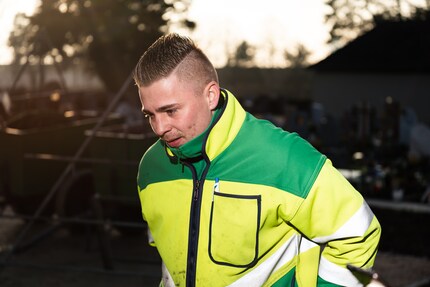
Simon starts digging in the excavator. Shovels haven't been used in ages. He carefully digs up the first load of earth. Similar to one of those game machines where you have to pick up a stuffed animal. In contrast, Simon doesn't drop anything, but manoeuvres the earth safely over to the still open grave. When one is uncovered, another is closed at the same time. Cemeteries are run just as efficiently as anything else. «We wait until all the mourners have gone, our work doesn't seem very empathetic at first,» Simon says. Stone on wood. Earth is dropped onto the coffin by machine. One last cacophony of noise before eternal silence. Nothing for tender minds dealing with the death of a loved one.
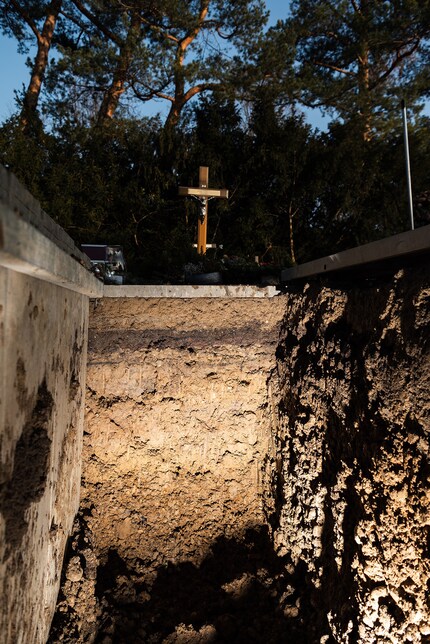
Pascal Nobs supports Simon in his work. He takes over the manual tasks: loosening stuck earth with a pitchfork and removing or fitting metal plugs. Each grave is filled with these between excavation and internment so that the side walls keep their shape. His equipment also includes a helmet for personal protection. He concentrates on the movements of the excavator and knows exactly what to do and when. The two experts don't need to communicate.
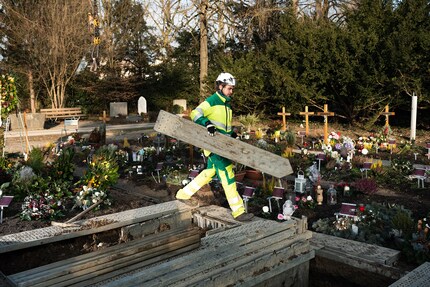
The omnipresence of death doesn't seem to depress anyone here seriously. «In the beginning you have to get used to it, but then it's a job like almost any other. Besides, I grew up with it. My father was a gravedigger until he retired a few years ago,» Simon tells me. I usually only hear stories like this from doctors or farmers. Gravedigger isn't exactly the typical boyhood dream job. «Actually, I always wanted to become a car mechanic, which unfortunately didn't work out. Eventually I became a bicycle repairman.» This didn't make him happy, so he decided to follow in his father's footsteps shortly after completing his education. «I like to be outside and work with my hands.»
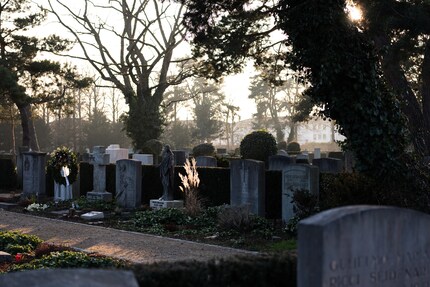
Reto Hufschmid, deputy director of Hörnli, says that you have to cope with the fact that you're surrounded by dead people while maintaining graves. He keeps talking to me while the other two are absorbed in their work. Every cemetery employee is made aware of this reality during their job interview. «Not everyone can stand death on this scale. Some applicants had leave in the middle of their trial day because the job was too much for them.» This isn't a problem for the 25 or so employees, they joke and laugh at lunchtime – as with many other jobs. There's only one thing that still gets to everyone even after all these years: a child's funeral. «Death is a part of life, but children never had one. It makes me wonder why it had to happen," says Simon.
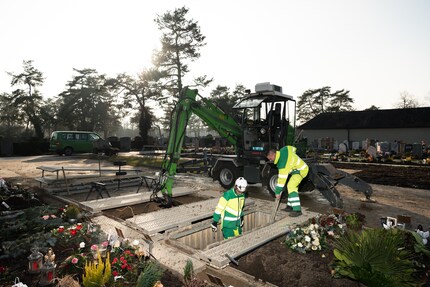
Whether young or old, every resident of Basel has a right to be buried at Hörnli, be it in a state coffin or in an urn. For 20 years, the grave officially belongs to the mortal remains of a person, after that it's left untouched for another five years. Only then will the plot be allocated again. To an urn if a coffin was buried before it. Hörnli carries out about 200 such burials annually. «Most of the deceased are Catholic,» Reto says. But not only Christians find their final resting place here. «On a separate field, the graves for Muslim deceased are oriented towards Mecca,» Reto explains.
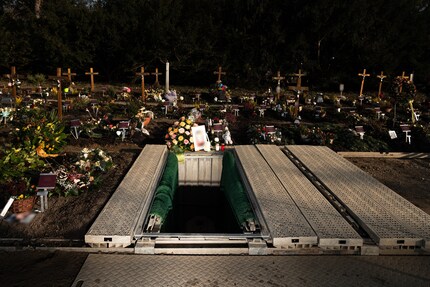
Differences can be seen not only in faith, but in every funeral that takes place at Hörnli. «Sometimes there's only one person present at the service, sometimes there's an incredible number. Sometimes they cry, other times they laugh and play music,» Simon says. «Sometimes I almost have to act as security so relatives won't jump into the grave. That's how maddening sadness and despair can be,» Pascal adds. But one thing is the same for all funerals. The so-called definitive grave design is only completed after ten months in the case of burials. The gravestone is erected after seven months, when the earth has settled sufficiently. Finally, a strip of grass is laid along the footpath and a uniform ground cover is planted.
In addition to grave design, the Hörnli often also takes care of maintenance. Of the 30,000 active gravesites, about 65 percent are maintained by cemetery staff, 30 percent by the bereaved and five percent by private gardeners. At the same time, increasing neglect can be observed in recent years. «Visits from relatives have decreased over the years. At some point, the grave is no longer maintained,» says Simon.
A good hour has passed since Pascal and Simon began their work. The machines are off, the metal plugs are cleared to the side, the grave is closed at ground level. Simon places a large bouquet of pink, yellow and orange roses as well as two decorative ribbons on the freshly applied humus layer. «Goodbye» is written on one ribbon. There will be silence.
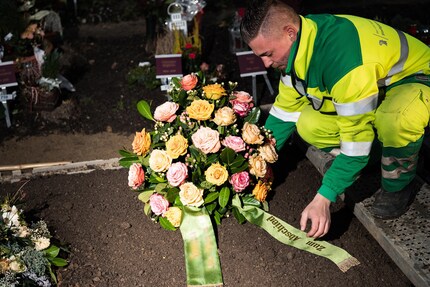
My life in a nutshell? On a quest to broaden my horizon. I love discovering and learning new skills and I see a chance to experience something new in everything – be it travelling, reading, cooking, movies or DIY.
Interesting facts about products, behind-the-scenes looks at manufacturers and deep-dives on interesting people.
Show all